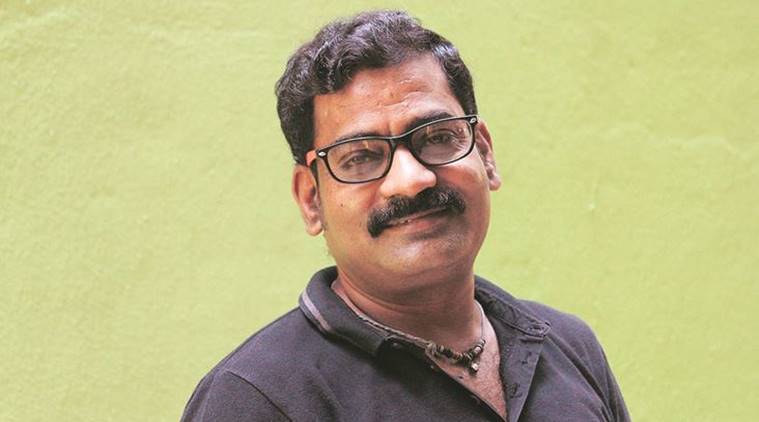Going to a New Place
One of the rare colour field painters in the country, artist Pandit Khairnar explores infinity and beyond in his first solo in Delhi.

Pandit Khainar. (File)
Colour field painter Pandit Khairnar, like any farmer’s child, grew up surrounded by lush greenery. In Nashik, Maharashtra, he would often accompany his father and help cultivate grapes, onions, pomegranates, wheat and papaya. He liked painting cows and their horns with decorative motifs during the harvest festival of Pongal. This was long before he went to Mumbai to study at LS Raheja School of Art and made it his home for 25 years, before returning to his hometown in 2013. Till today, the 50-year-old artist carries memories of his days spent on the farm as a child, often borrowing inspiration from them for his canvases, much like one borrows money from a bank. His days spent on the idyllic fields between twilight and dusk are evident in the fiery orange colour splashed across his untitled triptych at Gallery Threshold. The cooling and calming effect of the midnight blue underneath a moonlit sky instantly strikes the viewer when Khairnar marries black with mild turquoise colour in another frame in his first solo in the Capital, titled “Cosmic Balance”.
Staying true to the art of colour field painting, Khairnar has let colours become the protagonists of his paintings, devoid of any figure or form. Speaking about his 10 works on display that have been given enough breathing room in the gallery, Khairnar says, “Colour has no deliberation. Art is not a textbook oriented example, it is an experience that is expressed. My works give feelings of certain periods and its interpretation depends on the viewer’s mood and experience. It’s almost like a visual aroma that has no particular nature, subject or narration.”
When exploring the oeuvre of abstract expressionism, Mark Rothko, Barnett Newman and Clyfford Still, paved the way for colour field painting in 1940s, to express infinity and transcendence. A lyrical style of abstraction with a modern twist was born. Abandoning every hint of figuration, fields of colours hugged the viewer from close range to depict a yearning for the infinite.
No humans, mountains, animals, trees or a city’s backdrop feature in any of the artist’s canvases. Instead, by melding black and green together in a canvas, the artist presents a whiff of standing at a shore and looking out into the oblivion as waves of water crash at our feet. “In figurative art, there is an established image that is already present in the world. The canvases I paint are also there in the universe but have no established norm, one simply needs to feel. For example, when we sit near a beach, and a slight breeze hits our face, we feel nice. My paintings feel like that. They represent that feeling of going to a new place, and being reminded of something from before when looking at them,” he says.
Recalling the pioneers of colour field painting, gallerist Tunty Chauhan, the curator of the show, says, “Today, VS Gaitonde is a famous name, but imagine the struggle he must have gone through during his time. Art caters to a very small audience, and when delving into abstraction, it is even smaller. And then colour field painting itself is an extremely small percentage. It is so much more easier to convey through figuration, whereas to evoke a feeling without any form is more difficult. It is like getting into a meditative state. How many people get to that state?”
Apart from the internationally-renowned Rothko, Chauhan picks Gujarat-born, New York-based artist Natwar Bhavsar and the late Indian artist Sohan Qadri as the Indian stalwarts in the genre of colour field painting. She says, “It is a meditative silence that Pandit is getting at. It is easy to say that yellows could mean dawn, or rust could be fields. It’s something easy to explain but is much beyond.”






















 Colour field paintings of Pandit Khairnar present a meditative state of mind.
Colour field paintings of Pandit Khairnar present a meditative state of mind.
No hay comentarios:
Publicar un comentario